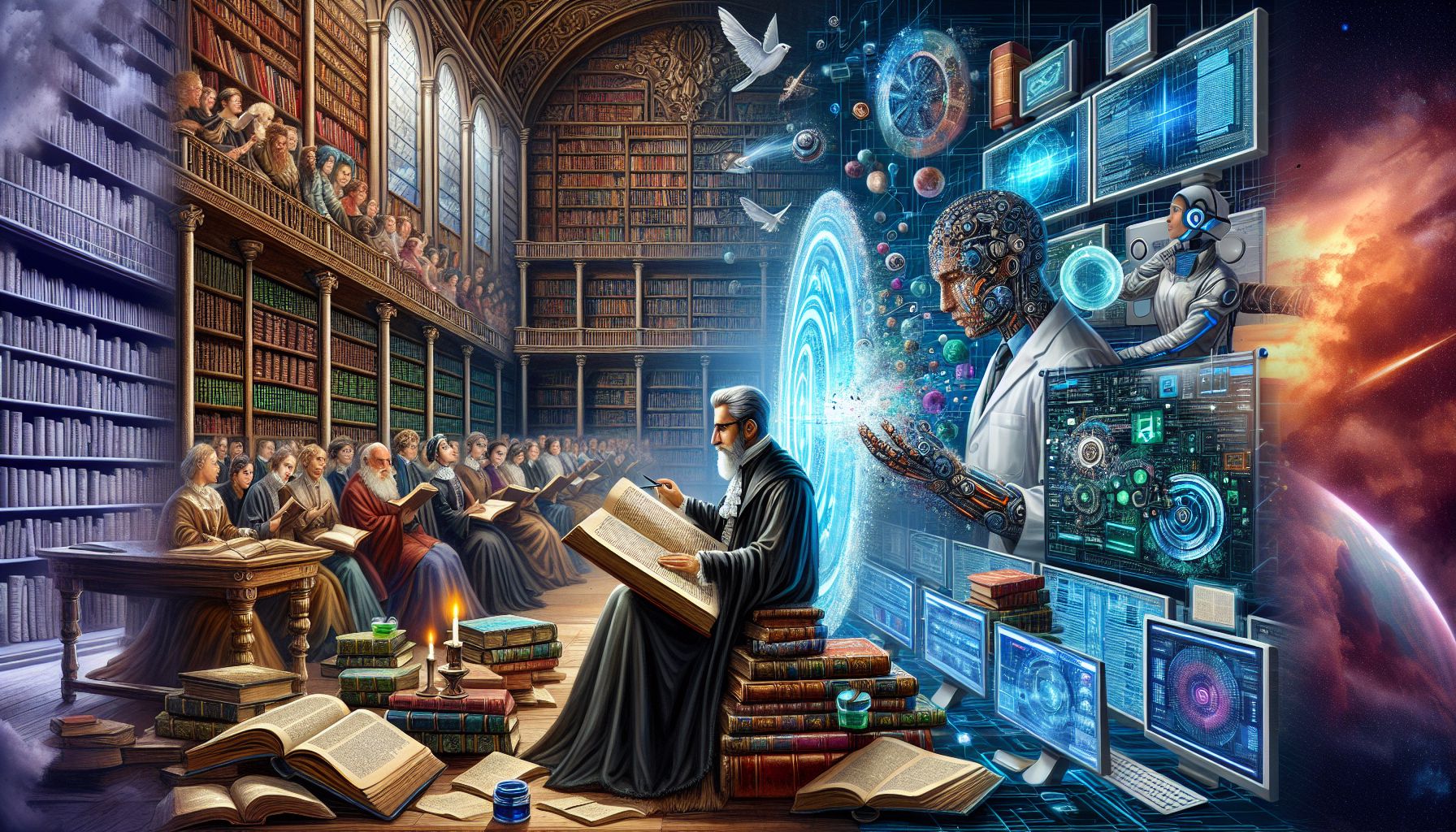As a reader, marvellously somersaulting into the depthless realm of an intriguing book is an indescribable experience – a teleporting journey that transcends time, space, and, indeed, reality. Be it the enticing milieu of fantasy, the riveting drama of romance, the spine-chilling aura of thrillers, or the cerebral stimulation of science fiction – books have forever remained our most loyal allies, silent yet sensitive. Today, we trace this fascinating odyssey of storytelling, wherein traditional books have now donned a digital avatar – a revolution brought about by the spectacular strides in technology.
Technology has deftly weaved its way into the intricate tapestry of literature, reshaping the contours of reading and writing. The evolution from parchment scrolls to printed pages itself was a disruptive transformation, and today, the digital revolution is shaking up the literary scene again. E-books, audiobooks, and reading apps have transformed our reading habits, making literature portable, customizable, and accessible in unprecedented ways.
At a writer’s end, technology has democratized the field of publishing. Self-publishing platforms and artificial intelligence-powered writing tools allow authors to craft narratives without traditional gatekeepers’ constraints.
Technology has also fostered hybrid genres and interactive storytelling, expanding literature’s horizons beyond imagination. The immense popularity of Web novels, a product of South Korea’s thriving online culture, and the emergence of interactive storytelling video games like ‘Life is Strange,’ bear testimony to this trend.
Despite the proliferation of screens, print books have proved remarkably resilient. Recent studies reveal that many readers still prefer physical books for their tactile feel and the immersive reading experience they offer.
However, there’s no denying that technology has democratized the literary landscape, be it through e-books which benefit environment-conscious readers, disabled individuals, or budget buyers, or through self-publishing platforms, allowing authorial voices to blossom outside traditional paradigms.
The marriage of technology and literature raises some interesting questions about the future. Could virtual reality bring a new dimension to immersive storytelling? Could AI writing models shift the creative landscape by co-authoring with humans? Will new digital platforms keep evolving to incorporate micro-narratives shared in transient social media stories?
In conclusion, despite the digital revolution, books in their soulful, paper-bound form still have a unique charm that resonates with many. Yet, we can hardly overlook the transformative influence of technology in broadening literature access and exploration. Much like the unending tales that books unfold, the storyline of technology in literature, it seems, has many exciting chapters yet to be written.

